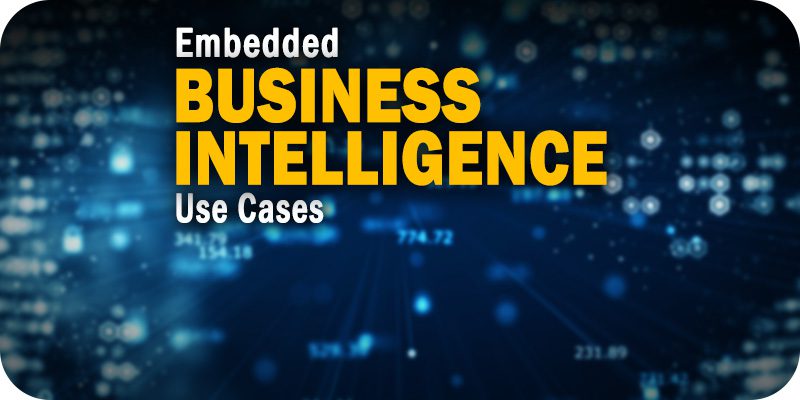Three Common Embedded Analytics Use Cases You Need to Know


Solutions Review highlights the most common embedded analytics use cases you need to know about so you can select the best software.
Embedded analytics software provides analytic functionality within the confines of a business application. Some self-service BI platforms provide the ability to embed analytic dashboards into commonly used applications to make data analysis more convenient. Embedding analytics into existing workflows helps business users gain access to the capabilities they need without having to go outside of the environments they use daily to do so. Users are often rewarded with faster, more informed and more efficient decision-making, which can lead to more actionable insight.
The process for buying embedded analytics or a standalone tool are very different. Buyers should be aware that embedded BI requires analysis flexibility and ease of analysis for non-technical users. Other major factors include the processing of embedding seamlessly into the host application, lifecycle management, and distribution at scale. With these things in mind, our editors have compiled this list of the most common embedded analytics use cases you need to know.
For an even deeper breakdown of embedded analytics, we recommend this short Sisense guide which highlights five effective use cases.
Common Embedded Analytics Use Cases
Self-Service Analytics
Self-service analytics enables non-technical users (see business analysts) the ability to connect directly to a number of data sources so they may analyze and build data visualizations of blended datasets. Successful self-service strategies incorporate elements of data governance as well. This is because data governance ensures that the information shared is accurate and exhibits quality control. It is recommended for users to form partnerships to ensure that data is in place and that it has integrity. Business definitions also need to be accurately laid out for efficient report consumption and creation.
Data source connectivity is a key consideration if you are evaluating data analytics and BI software and require self-service. The same goes for data preparation functionality and the ability to for non-technical users to create data visualizations from the data they curated.
Governed Data Democratization
Organizations are now growing to understand that providing line-of-business users with access to the data they so desire can bring great benefits. Cross-enterprise data access isn’t the only aspect to this, however. To produce insights that will impact the bottom line, end-users need self-service analytics tools that they can utilize on an ad hoc basis so they may answer important questions on the fly.
In the past, the IT department would play the role of data steward, overseeing a company’s entire data pipeline, from collection to analysis. With the role of IT now in a state of flux, data governance has emerged as the new guardian of important data. It’s no doubt that with user autonomy becoming the new norm, organizations want to ensure their most important data resources remain in the right hands.
Increased User Adoption
We’ve seen proof before that data analytics provides a competitive edge. Wide in-enterprise dispersion of analytical capabilities and a strong focus on specialized applications are the driving force behind obtaining an advantage. The main factors behind gaining a competitive edge from data and analytics are buoyed by recent advances in technology, including the proliferation of cloud analytics and distributed storage. These innovations have fostered widespread organizational adoption that has pushed analytics into the mainstream.
Per MIT, companies that are more likely to share data between users are the ones that reap the rewards, as innovation with analytics is a near direct result of this democratization. Organizations that agree that analytics helps them innovate share data both internally and beyond company borders at much higher levels than other organizations.
































